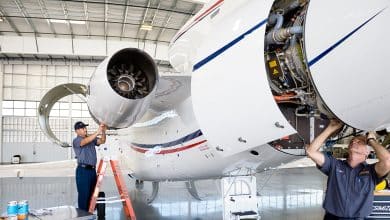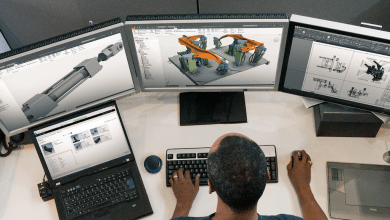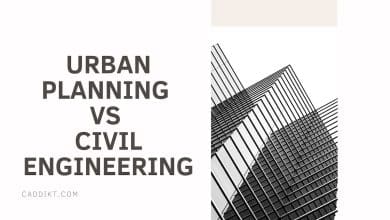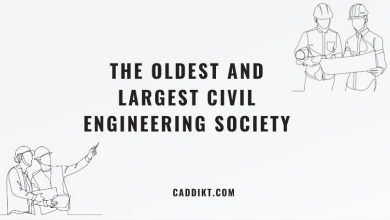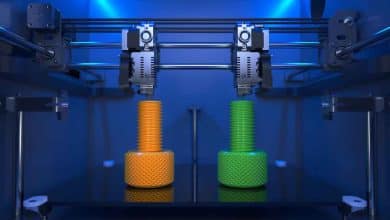Welcome to our comprehensive guide to the world of structural engineering! In this article, we will delve into the fascinating field of structural engineering and provide explanations for over 100 key terms related to this discipline. Whether you’re a student, a professional engineer, or simply curious about the world of structures, this glossary aims to demystify the terminology commonly encountered in the realm of structural engineering.
Structural engineering plays a vital role in shaping the built environment, ensuring the safety, functionality, and durability of various structures, from towering skyscrapers and expansive bridges to intricate roof systems and robust industrial facilities. By understanding the fundamental terms and concepts in structural engineering, we gain insights into the principles that govern the design, analysis, and construction of these
Structural Engineering Glossary
1. Abutment
An abutment is a structure that supports the ends of a bridge or any other structure to transfer loads into the ground or adjacent structures. It provides stability and resists horizontal forces.
2. Allowable Stress
Allowable stress is the maximum stress a material can withstand without experiencing permanent deformation or failure. It is determined based on factors such as the material’s strength, design codes, and safety factors.
3. Analysis Model
An analysis model is a simplified representation of a structure used for calculations and simulations. It captures the essential characteristics of the structure while neglecting certain details to simplify the analysis process.
4. Anchorage
Anchorage refers to the means by which a structural element, such as a cable or tendon, is secured to resist forces and transmit loads to the surrounding structure or ground. It ensures the stability and integrity of the structure.
5. Arch
An arch is a curved structural element that carries loads primarily through compression. It distributes forces outward along its curved shape, enabling it to span large distances and support heavy loads without the need for intermediate supports.
6. Axial Force
Axial force is a type of force that acts along the axis of a structural element, such as a column or beam. It can be either compression (pushing) or tension (pulling) force and affects the stability and load-bearing capacity of the element.
7. Base Plate
A base plate is a thick, flat steel plate that provides a stable and level foundation for supporting columns or other vertical structural members. It distributes the loads from the column to the underlying foundation or structural system.
8. Bearing Capacity
Bearing capacity refers to the maximum load that a soil or foundation material can support without excessive settlement or failure. It is an important consideration in structural engineering to ensure the stability and safety of a structure.
9. Bending Moment
A bending moment is a measure of the bending or flexural effect induced in a structural element, such as a beam, due to external loads. It determines the internal stresses and deformation experienced by the element.
10. Braced Frame
A braced frame is a structural system composed of vertical and diagonal members connected to form a rigid framework. It provides resistance against lateral loads, such as wind or seismic forces, by transferring them to the foundation.
11. Buckling
Buckling is a sudden and often catastrophic failure mode that occurs when a slender structural element, such as a column or strut, fails under compression due to inadequate stiffness or excessive load. It involves a sudden lateral deflection or bending.
12. Cable-Stayed Bridge
A cable-stayed bridge is a type of bridge where the deck is supported by cables attached to towers or pylons. The cables distribute the load from the deck to the towers, providing stability and allowing for longer spans than traditional beam bridges.
13. Cantilever
A cantilever is a structural element that extends horizontally and is supported at only one end, while the other end remains free. It relies on the principle of leverage to carry loads and is commonly used in structures such as balconies, canopies, and bridges.
14. Cast-in-Place Concrete
Cast-in-place concrete refers to the process of pouring concrete into forms or molds on-site, allowing it to harden and form the desired structural element. It offers flexibility in shape and size and is commonly used in the construction of foundations, walls, and slabs.
15. Column
A column is a vertical structural member designed to support compressive loads, typically in a building or structure. It transfers the load from the superstructure to the foundation and plays a crucial role in maintaining the overall stability and integrity of the structure.
16. Composite Material
A composite material is a combination of two or more different materials with distinct properties, resulting in a new material with enhanced characteristics. In structural engineering, composite materials, such as fiber-reinforced polymers (FRP), are used to improve strength, durability, and performance.
17. Concrete
Concrete is a versatile construction material composed of cement, aggregates (such as sand and gravel), water, and often additional admixtures. It hardens over time to form a strong and durable material that is widely used in the construction of buildings, bridges, and infrastructure.
18. Connection
A connection refers to the joining or linking of structural elements together to form a complete structural system. Connections play a critical role in transferring forces and ensuring the integrity and stability of the overall structure.
19. Continuous Beam
A continuous beam is a structural element that spans multiple supports without any hinges or breaks in between. It distributes loads along its length and provides stability and strength to the structure, often used in bridge construction and building frames.
20. Creep
Creep is the gradual deformation or movement of a material under a sustained load over time. It is a time-dependent phenomenon and can affect the long-term behavior and structural integrity of materials, particularly in structures subjected to constant or heavy loads.
21. Cross-Bracing
Cross-bracing refers to a structural system where diagonal members are placed in an X or V pattern to provide stability and resist lateral forces. It is commonly used in buildings and bridges to enhance structural rigidity and prevent sway or deformation.
22. Dead Load
Dead load refers to the static weight or mass of a structure, including its own self-weight and fixed elements such as walls, floors, and equipment. It is an essential consideration in structural design and plays a role in determining overall stability and load-bearing capacity.
23. Deck
A deck is the horizontal surface or platform of a bridge, balcony, or elevated structure that provides a walking or load-bearing surface. It is typically constructed of materials such as concrete, steel, or timber and supports the live loads imposed on the structure.
24. Deflection
Deflection is the degree of bending or deformation that a structural element experiences under load. It measures the extent to which a structure or member deviates from its original position or shape and is an important factor in closely monitoring and assessing structural performance and safety. Excessive deflection can indicate structural weaknesses or the need for additional reinforcement.
25. Diaphragm
A diaphragm is a horizontal structural element that provides rigidity and distributes lateral loads, such as wind or seismic forces, to the vertical elements of a structure. It acts as a rigid plate or slab and is commonly found in buildings, bridges, and other load-bearing structures.
26. Dynamic Analysis
Dynamic analysis is a method used to study the behavior of structures under dynamic loads, such as vibrations or earthquakes. It involves considering the time-varying nature of loads and their effects on the structural response, enabling engineers to assess structural integrity and safety.
27. Earthquake Engineering
Earthquake engineering is a specialized branch of structural engineering that focuses on designing structures to withstand seismic forces. It involves assessing and mitigating the potential damage caused by earthquakes through measures such as proper structural configuration, materials selection, and seismic analysis.
28. Effective Length
Effective length refers to the length of a structural member that influences its stability and ability to resist buckling. It considers factors such as boundary conditions, support conditions, and the geometry of the member to determine the effective length for design calculations.
29. Elasticity
Elasticity is the property of a material that allows it to regain its original shape after experiencing deformation due to external forces. In structural engineering, understanding the elasticity of materials is crucial for predicting and analyzing the behavior of structures under load.
30. Fatigue
Fatigue is the weakening or failure of a material or structure due to repeated or cyclic loading over time. It is a phenomenon that can occur even when the applied stress levels are below the material’s yield strength, making it an important consideration in the design and assessment of structures.
31. Fixed Support
A fixed support, also known as a fixed connection, is a type of structural support that resists both vertical and horizontal movements or rotations. It provides maximum restraint to the supported member, preventing translation and rotation at the connection point.
32. Flexural Strength
Flexural strength, also referred to as bending strength, is the ability of a material or structural element to resist bending or flexural loads. It is a measure of the maximum stress the material can withstand before permanent deformation or failure occurs.
33. Footing
A footing, also known as a foundation footing, is a structural element that transfers the load from a column, wall, or pier to the underlying soil or rock. It spreads the load over a larger area to prevent excessive settlement and ensure the stability of the structure.
34. Foundation
A foundation is the lowermost part of a structure that supports and transmits the loads from the superstructure to the underlying soil or rock. It is designed to distribute the loads and prevent excessive settlement or movement that could compromise the structural integrity.
35. Frame
A frame is a structural system composed of interconnected beams, columns, and other elements that work together to support loads and provide stability. Frames are commonly used in building and bridge construction, offering strength, rigidity, and resistance against various forces.
36. Free Body Diagram
A free body diagram is a simplified representation of a structure or a part of a structure that isolates it from its surroundings and shows all the external forces acting on it. It helps engineers analyze the forces and moments acting on a structure and design appropriate support and reinforcement systems.
37. Girder
A girder is a large, horizontal or sloping structural member that supports and distributes loads to the columns, piers, or other vertical supports in a structure. It is commonly used in bridge construction and large building projects to provide strength and stability over long spans.
38. Gusset Plate
A gusset plate is a steel plate used to connect and reinforce the junction of two or more structural members, typically in truss systems or bracing connections. It increases the strength and rigidity of the joint, ensuring load transfer and structural integrity.
39. Hinge
A hinge is a mechanical device or connection that allows rotational movement between two structural elements. It permits relative rotation or angular displacement, accommodating the movement caused by factors such as thermal expansion, settlement, or structural deflections.
40. I-Beam
An I-beam, also known as a universal beam or H-beam, is a structural steel member with an I or H-shaped cross-section. It provides high strength and load-bearing capacity while efficiently utilizing material. I-beams are commonly used in building and bridge construction.
41. Inelastic Behavior
Inelastic behavior refers to the response of a material or structure that does not fully recover its original shape or properties after experiencing significant deformation. It typically occurs when the applied stress exceeds the material’s yield strength, resulting in permanent deformation or plasticity.
42. Joist
A joist is a horizontal structural member used in floor or roof framing systems to support loads and distribute them to the supporting beams, walls, or columns. Joists are commonly made of wood, steel, or engineered materials and are spaced at regular intervals to create a framework.
43. Lateral Load
A lateral load is a horizontal force or load that acts perpendicular to the longitudinal axis of a structure. It includes forces such as wind loads, seismic loads, or pressure from soil or water. Lateral loads can significantly affect the stability and structural performance of a building or bridge.
44. Lintel
A lintel is a horizontal structural element, often made of reinforced concrete, steel, or stone, placed across the top of an opening (such as a door or window) to support the load from the structure above. It distributes the load to the surrounding walls or columns and prevents sagging or collapse.
45. Live Load
A live load refers to the temporary or movable loads imposed on a structure, such as people, furniture, vehicles, or equipment. Unlike dead loads, which are constant, live loads vary in magnitude and location and are considered in structural design to ensure the structure can safely support these loads.
46. Load Bearing Wall
A load-bearing wall, also known as a bearing wall, is a wall that supports vertical loads from the structure above, including the weight of the roof, floors, and any additional loads. It plays a critical role in transferring these loads to the foundation and providing overall structural stability.
47. Load Path
A load path refers to the route or sequence through which loads are transferred from the point of application to the supporting elements or the foundation of a structure. It ensures the proper distribution and transmission of loads, preventing localized overloading and ensuring structural integrity.
48. Modulus of Elasticity
The modulus of elasticity, also known as Young’s modulus, is a material property that measures its stiffness or ability to resist deformation when subjected to an applied stress. It quantifies the relationship between stress and strain in a material and is a fundamental parameter used in structural analysis and design calculations.
49. Moment Connection
A moment connection is a type of structural connection that allows the transfer of bending moments between two connected members, such as beams or columns. It provides rigidity and strength to resist the bending forces and ensures the continuity of load transfer at the connection point.
50. Moment of Inertia
The moment of inertia is a geometric property that quantifies an object’s resistance to changes in rotational motion. In structural engineering, it is used to assess the structural behavior and deflection of beams and columns under bending loads. The moment of inertia depends on the shape and distribution of the object’s mass.
51. Parapet
A parapet is a low protective wall or railing located at the edge of a roof, balcony, bridge, or elevated structure. It serves to prevent falls, provide safety, and sometimes serves an aesthetic function as well.
52. Partially Restrained Connection
A partially restrained connection is a type of structural connection that exhibits some resistance to rotational or translational movement but does not provide full restraint. It allows limited movement, typically to accommodate thermal expansion or to reduce stress concentrations at the connection point.
53. Pier
A pier is a vertical structural support that provides intermediate support for beams, girders, or arches in a bridge or similar structure. Piers are typically larger and more massive than columns and are designed to transfer loads to the foundation or supporting structure.
54. Pile
A pile is a long, slender structural element driven into the ground to provide support and stability for structures. Piles are commonly used in foundation systems to transfer the loads from a structure to deeper, load-bearing layers of soil or rock beneath the surface.
55. Pile Foundation
A pile foundation is a type of deep foundation that relies on piles to support and transfer loads to the ground. Pile foundations are used when shallow foundations are impractical or when the soil conditions require deeper support to ensure the stability and safety of the structure.
56. Plate Girder
A plate girder is a large, deep beam or girder made by welding or bolting together steel plates to form the desired shape. Plate girders are commonly used in bridge construction and building frames, providing strength, stiffness, and resistance to bending and shear forces.
57. Portal Frame
A portal frame is a type of structural frame that consists of vertical columns and horizontal beams connected by rigid connections at the top and bottom. Portal frames are commonly used in buildings and bridges to provide stability, resist lateral loads, and create large, open spaces.
58. Post-tensioning
Post-tensioning is a method of reinforcing concrete after it has been cast by inserting tensioned steel cables or tendons into the structure and anchoring them against the hardened concrete. This technique helps improve the strength and performance of concrete structures, allowing for longer spans and reduced cracking.
59. Pre-stressed Concrete
Pre-stressed concrete is a type of concrete that is placed under compression before it is subjected to loads. This is achieved by tensioning steel strands or tendons within the concrete. Pre-stressed concrete enhances the structural capacity, durability, and resistance to cracking of the material.
60. Prestressing
Prestressing is the process of applying internal forces to a structural member or element, typically using tensioned steel cables or tendons, to improve its load-carrying capacity and performance. It helps to counteract the anticipated external loads and reduce the effects of potential deformations.
61. Principal Stress
Principal stress refers to the maximum and minimum stresses experienced by a material or structure at a given point. These stresses act in mutually perpendicular directions and play a critical role in determining failure criteria, deformation behavior, and structural integrity. Understanding the principal stresses is essential for analyzing and designing structures to ensure they can withstand the anticipated loads and environments.
62. Reinforced Concrete
Reinforced concrete is a composite material composed of concrete and reinforcement, typically in the form of steel bars or mesh. The reinforcement provides tensile strength to complement the high compressive strength of concrete, creating a versatile and durable construction material. Reinforced concrete is widely used in various structural applications, including buildings, bridges, and infrastructure.
63. Reinforcement
Reinforcement in structural engineering refers to the materials, such as steel bars, mesh, or fibers, added to concrete or other materials to enhance their strength, durability, and load-carrying capacity. Reinforcement is strategically placed in areas of the structure that are prone to tensile or shear stresses, providing resistance against these forces and preventing failure.
64. Retaining Wall
A retaining wall is a structure designed to resist the lateral pressure of soil or other materials and provide support to prevent erosion, slope instability, or the movement of earth masses. Retaining walls are commonly used in landscaping, road construction, and building projects to create level surfaces and maintain stability.
65. Rigid Frame
A rigid frame, also known as a moment-resisting frame, is a structural system that provides stability and resists lateral loads by developing bending resistance at the connections between columns and beams. Rigid frames are widely used in building construction and offer strength, durability, and versatility in design.
66. Roof Truss
A roof truss is a structural framework consisting of triangular units assembled to form a stable and efficient roof structure. Trusses are commonly made of timber or steel and provide support to the roof covering, transferring the weight to the supporting walls or beams. Roof trusses allow for longer spans and open interior spaces.
67. Scaffolding
Scaffolding is a temporary structure or framework used to support workers and materials during construction, maintenance, or repair of buildings or other structures. It provides a safe working platform and access to elevated areas, allowing workers to perform tasks at various heights.
68. Seismic Design
Seismic design is the process of designing structures to resist the effects of earthquakes. It involves analyzing the seismic forces that can act on a structure and implementing appropriate measures to ensure the safety and integrity of the building or infrastructure under seismic events.
69. Settlement
Settlement refers to the vertical movement or displacement of the ground or a structure due to various factors, including soil consolidation, compression, or uneven loading. Settlement can impact the stability and performance of structures and is an important consideration in foundation design and construction.
70. Shear Force
Shear force is a force that acts parallel to a surface, attempting to slide or deform the material along that surface. In structural engineering, shear forces can occur in beams, columns, or other structural elements and must be considered in design to ensure structural integrity and prevent failure.
71. Shear Stress
Shear stress is the force per unit area that acts parallel to a surface and tries to deform or slide one surface relative to another. In structural engineering, shear stress is a critical parameter in assessing the strength and stability of structural elements subjected to shear forces. It is a key consideration in the design of beams, columns, and connections to ensure structural safety and prevent shear failure.
72. Shear Wall
A shear wall is a vertical structural element designed to resist lateral forces, such as wind or seismic loads, by transferring them to the foundation. Shear walls provide stability and prevent the excessive lateral deformation of a building, enhancing its overall structural integrity and resistance to horizontal forces.
73. Shoring
Shoring is a temporary support system used to provide stability to excavations, trenches, or buildings during construction or repair. It typically consists of vertical supports, such as steel or timber props, braces, or hydraulic jacks, which prevent the collapse or movement of the surrounding soil or structure.
74. Slab
A slab is a horizontal structural element used to create flat surfaces in buildings, bridges, and other structures. Slabs can be made of various materials, such as concrete, steel, or timber, and provide support for live loads, distribute loads to supporting beams or walls, and contribute to the overall stability of the structure.
75. Soil-Structure Interaction
Soil-structure interaction refers to the mutual influence and response between a structure and the surrounding soil or foundation. It considers the effects of the soil properties, such as stiffness, settlement, and lateral resistance, on the behavior and performance of the structure. Understanding soil-structure interaction is crucial for accurate structural analysis and design.
76. Span
A span refers to the distance between two supports in a structural system. It is the length of the clear space between supports, such as columns or walls, over which a structural element, such as a beam or a bridge, extends. The span plays a crucial role in determining the structural design and the overall stability of the system.
77. Stability
Stability in structural engineering refers to the ability of a structure to maintain its equilibrium under various loading conditions without experiencing excessive deformation or failure. It involves ensuring that the structure remains balanced, secure, and resistant to overturning, sliding, or collapsing. Stability is a fundamental consideration in the design and analysis of structures to ensure their safety and reliability.
78. Statically Determinate
A statically determinate structure is one in which the internal forces and reactions can be determined solely from the external loads and the geometry of the structure. In other words, the equilibrium equations alone are sufficient to analyze and solve the structure. Statically determinate structures are typically easier to analyze and design compared to statically indeterminate structures.
79. Statically Indeterminate
A statically indeterminate structure is one in which the internal forces and reactions cannot be determined solely from the external loads and the geometry of the structure. Additional equations or compatibility conditions are required to analyze and solve the structure. Statically indeterminate structures often exhibit greater complexity and require advanced analysis techniques, such as the method of virtual work or the finite element method, to determine the internal forces accurately.
80. Steel
Steel is a widely used construction material in structural engineering due to its exceptional strength, ductility, and durability. It is an alloy primarily composed of iron and carbon, with the addition of other elements to enhance its properties. Steel structures offer high load-carrying capacity, versatility, and resistance to various environmental factors, making them suitable for a wide range of applications, including buildings, bridges, and industrial facilities.
81. Stiffness
Stiffness refers to the resistance of a structural element or system to deformation under applied loads. It is a measure of the rigidity or flexibility of the structure. High stiffness indicates that the structure will experience minimal deformation and deflection, while low stiffness results in larger displacements. Stiffness is a critical parameter in structural design to ensure that the structure can effectively support the loads without compromising its integrity or functionality.
82. Strain
Strain is a measure of the deformation experienced by a structural material or element in response to applied stress. It represents the relative change in length, area, or volume of the material due to external loads. Strain can be expressed as the ratio of the change in dimension to the original dimension of the material. Understanding strain is crucial for assessing the behavior and performance of structural elements, as excessive strain can lead to deformation, failure, or reduced serviceability.
83. Stress
Stress is the internal resistance or force experienced by a structural material or element when subjected to external loads. It is a measure of the intensity of the internal forces within the material. Stress can be categorized into various types, including axial stress, shear stress, and bending stress, depending on the type of loading.
Axial stress occurs when forces act parallel or anti-parallel to the axis of the structural member, causing elongation or compression. Shear stress arises from forces that act parallel but in opposite directions, resulting in a sliding or shearing effect. Bending stress occurs in beams or other structural elements when loads cause them to bend or deform.
Stress is typically expressed as a force per unit area and is denoted in units such as pounds per square inch (psi) or pascals (Pa). It is a crucial factor in structural design, as excessive stress can lead to material failure, deformation, or reduced serviceability. Structural engineers analyze and calculate stress distributions within a structure to ensure that the materials used can safely withstand the applied loads and maintain structural integrity.
84. Stress Concentration
Stress concentration refers to the localized areas of high stress within a structural component or material. It occurs when there is a sudden change in geometry or the presence of irregularities, such as notches, holes, or sharp corners. These stress concentrations can significantly reduce the strength and fatigue resistance of the structure, increasing the likelihood of failure. Design considerations, such as filleting, blending, or using stress-relieving features, are employed to minimize stress concentrations in order to enhance structural integrity.
85. Stress-Strain Curve
A stress-strain curve is a graphical representation of the relationship between stress and strain in a material. It illustrates how the material deforms under applied stress and provides valuable information about its mechanical properties. The curve typically exhibits distinct regions, including the elastic region, where the material returns to its original shape upon stress removal, and the plastic region, where permanent deformation occurs. The stress-strain curve helps engineers analyze and predict the behavior of materials, aiding in the design and assessment of structural elements.
86. Structural Analysis
Structural analysis involves the examination and calculation of the internal forces, deformations, and stability of structures under different loading conditions. It is a crucial step in the design process, ensuring that structures can safely withstand the anticipated loads and environmental effects. Structural analysis techniques include analytical methods, such as the finite element method or matrix analysis, as well as computer-aided simulations to assess the structural performance, validate designs, and optimize structural systems.
87. Structural Dynamics
Structural dynamics deals with the study of how structures respond to dynamic loads, such as vibrations, earthquakes, or wind-induced forces. It considers the interaction between the structure and the dynamic forces to evaluate the structural behavior, including natural frequencies, mode shapes, and response amplitudes. Understanding structural dynamics is vital for designing structures that can effectively mitigate the effects of dynamic loads and ensure occupant comfort, safety, and structural integrity.
88. Structural Integrity
Structural integrity refers to the ability of a structure to perform its intended function safely and reliably throughout its service life. It encompasses the structural system’s capacity to withstand applied loads, resist deformation, and maintain stability while satisfying design requirements and applicable codes and standards. Structural integrity is a critical consideration in ensuring the durability, safety, and performance of structures, emphasizing the need for sound design, quality materials, proper construction, and regular inspections.
89. Structural Steel
Structural steel is a type of steel specifically manufactured and designed for use in building and infrastructure projects. It possesses excellent strength, ductility, and versatility, making it a popular choice in structural engineering. Structural steel members, such as beams, columns, and trusses, offer high load-carrying capacity and can be fabricated into various shapes and sizes to suit different structural requirements. The use of structural steel enables the construction of efficient, durable, and cost-effective structures.
90. Substructure
The substructure refers to the lower part of a structure that supports and transfers the loads from the superstructure to the ground or underlying foundation. It includes elements such as foundations, piers, abutments, and other supporting components. The substructure plays a crucial role in distributing loads safely and ensuring the stability and integrity of the overall structure. It is designed to withstand vertical, horizontal, and lateral forces while considering factors such as soil conditions, groundwater, and environmental effects.
91. Superstructure
The superstructure refers to the upper portion of a structure that is supported by the substructure. It includes elements such as floors, walls, roofs, beams, and other load-bearing components. The superstructure is responsible for carrying the applied loads and transferring them to the substructure. It is designed to provide the desired functionality, occupant safety, and architectural aesthetics while considering factors such as structural stability, material selection, and construction methods.
92. Support
In structural engineering, support refers to the points or regions where a structure is connected or anchored to its foundation or other supporting elements. Supports provide restraint and stability to the structure by resisting external forces and preventing excessive movement or deformation. Common types of supports include fixed supports, hinged supports, and roller supports, each offering different levels of constraint and allowing specific types of structural movements.
93. Suspension Bridge
A suspension bridge is a type of bridge that utilizes suspended cables to support the bridge deck. The cables are anchored at each end of the bridge and are typically connected to tall towers or pylons. Suspension bridges are known for their long spans, graceful appearance, and ability to withstand dynamic loads, such as wind and vibrations. They are commonly used to cross large bodies of water or span wide valleys, providing efficient and visually striking transportation routes.
94. Tension
Tension is a type of stress that occurs when forces act to elongate or stretch a structural component. It is characterized by the pulling or stretching of the material. Tension forces are resisted by the material’s tensile strength and can cause elongation, deformation, or failure if they exceed the material’s capacity. Tension is an essential consideration in structural design, particularly in elements such as cables, ropes, and suspension systems, where the ability to withstand tensile forces is crucial.
95. Torsion
Torsion refers to the twisting or rotational deformation experienced by a structural element when subjected to torque or twisting forces. It occurs when forces act in opposite directions at different points along the length of the element, causing it to twist. Torsional forces can lead to shear stresses and strains within the material, potentially resulting in structural instability or failure. Torsion is a critical consideration in the design of elements such as beams, shafts, and columns, where resistance to twisting is essential for structural integrity.
96. Truss
A truss is a structural system composed of interconnected members forming triangular units. Trusses are designed to efficiently carry loads and provide stability. They are commonly used in bridges, roofs, and towers, where their lightweight and high-strength characteristics are advantageous. Trusses distribute forces along the members, allowing for efficient load transfer and minimizing material usage. Various types of trusses exist, such as the Pratt truss, Warren truss, and Howe truss, each offering specific load-carrying and architectural benefits.
97. Ultimate Strength
Ultimate strength, also known as the ultimate load or capacity, refers to the maximum load or stress that a structural element or system can sustain before failure occurs. It represents the point at which the material or structure experiences significant deformation, yielding, or collapse. Determining the ultimate strength is crucial for ensuring that structures can safely carry the expected loads and prevent catastrophic failures. It is typically assessed through laboratory testing, numerical analysis, or empirical methods, considering factors such as material properties, structural configuration, and safety factors.
98. Vibration
Vibration refers to the oscillation or back-and-forth motion of a structure or its components. It can be induced by various factors, including dynamic loads, wind, seismic activity, or machinery. Excessive vibration can lead to structural fatigue, discomfort to occupants, and potential damage to the structure. Structural engineers analyze and mitigate vibrations through techniques such as damping, isolation, and vibration control devices to ensure the safety, functionality, and longevity of structures.
99. Wind Load
Wind load refers to the force exerted by the wind on a structure. It is a critical design consideration, particularly for tall buildings, bridges, and other structures exposed to high winds. Wind loads can cause structural vibrations, stresses, and deformations, potentially leading to failure if not adequately accounted for. Structural engineers employ wind tunnel testing, computational fluid dynamics (CFD), and empirical formulas to determine the wind loads on structures and design them to withstand the anticipated wind forces.
100. Yield Strength
Yield strength is the stress at which a material begins to exhibit permanent deformation or plastic behavior. It represents the point at which the material undergoes significant strain without a proportional increase in stress. Yield strength is a crucial parameter for structural design as it indicates the material’s ability to withstand loads without experiencing permanent deformation. It is typically determined through laboratory testing and is used to establish design limits and safety factors in structural engineering.
Conclusion
The field of structural engineering encompasses a vast array of terms and concepts that are integral to the design, analysis, and construction of structures. We have explored over 100 key terms in this glossary, shedding light on the language of structural engineering and offering a deeper understanding of the discipline. From understanding the behavior of materials under stress to analyzing complex structural systems, each term contributes to the foundation of this fascinating field.
By familiarizing ourselves with these terms, we gain a valuable toolkit for effective communication and collaboration within the world of structural engineering. As technology advances and innovative designs continue to shape our built environment, staying informed and knowledgeable about these key terms becomes even more critical. Whether you’re a student embarking on a structural engineering journey or a professional seeking to expand your expertise, this glossary serves as a valuable resource, empowering you to navigate the intricate world of structures with confidence and understanding.




